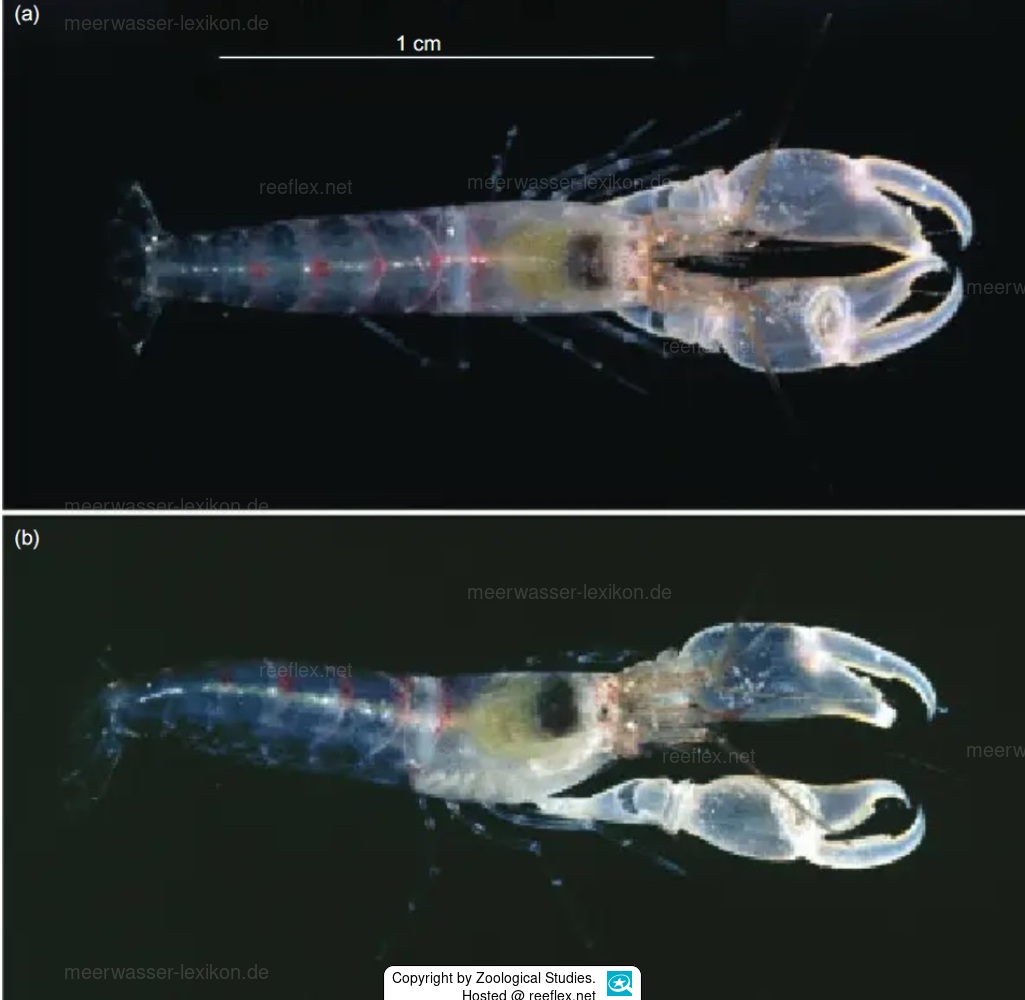Info
The small pop crab was taken from a basket with pieces of old Acropora palmata placed at a depth of 9 meters.
The basket was placed on a very open plain covered by soft corals growing on a coralline pavement, with widely scattered eroded coral heads of medium size on rubble and sand.
The body of the firecracker is semi-transparent, with small red chromatophores arranged in broad transverse bands: on each abdominal somite and across the posterior carapace; posterior 1/2 of the carapace with red chromatophores; postros tral region and anterolateral margins of the carapace with small patches of red chromatophores;
Rostrum pale orange, antennal peduncle, base and scaphocerite of antennae also pale orange and mottled with red chromatophores
The chelipeds are hyaline gray, the walking legs semi-transparent;
The eyes of the small crustacean are gray with a golden sheen; the internal organs, which are clearly visible through the carapace, are dull brownish-green.
Etymology:
The species name "guana" was named after its locality, the Guana Islands, British Virgin Islands.
Literature reference:
Zoological Studies 46(4): 428-440 (2007
Arthur Anker
Pseudalpheopsis guana gen. nov., sp. nov. (Crustacea: Decapoda), a New Alpheid Shrimp from the British Virgin Islands, Caribbean Sea
http://zoolstud.sinica.edu.tw/Journals/46.4/428.pdf
The basket was placed on a very open plain covered by soft corals growing on a coralline pavement, with widely scattered eroded coral heads of medium size on rubble and sand.
The body of the firecracker is semi-transparent, with small red chromatophores arranged in broad transverse bands: on each abdominal somite and across the posterior carapace; posterior 1/2 of the carapace with red chromatophores; postros tral region and anterolateral margins of the carapace with small patches of red chromatophores;
Rostrum pale orange, antennal peduncle, base and scaphocerite of antennae also pale orange and mottled with red chromatophores
The chelipeds are hyaline gray, the walking legs semi-transparent;
The eyes of the small crustacean are gray with a golden sheen; the internal organs, which are clearly visible through the carapace, are dull brownish-green.
Etymology:
The species name "guana" was named after its locality, the Guana Islands, British Virgin Islands.
Literature reference:
Zoological Studies 46(4): 428-440 (2007
Arthur Anker
Pseudalpheopsis guana gen. nov., sp. nov. (Crustacea: Decapoda), a New Alpheid Shrimp from the British Virgin Islands, Caribbean Sea
http://zoolstud.sinica.edu.tw/Journals/46.4/428.pdf







 Zoological Studies
Zoological Studies

